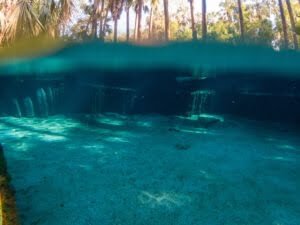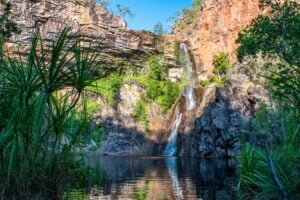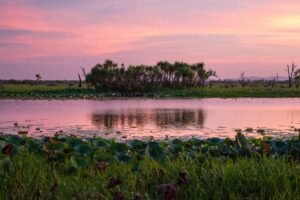There are few places in the world that you can just walk off a perfect white sand beach into crystal clear ocean and snorkel and dive through one of the most stunning and pristine fringing reefs you’ve ever seen. The Ningaloo Reef has countless spots where this can be done starting in Carnarvon and Quobba Station running all the way up to Exmouth and the Northwest Cape.
Exmouth is undoubtedly an ocean’s lover paradise: fishing, snorkelling, diving, surfing, and kiteboarding are all popular activities here. Not so much a fan of the ocean? That’s ok, this area is known as where “the range meets the reef”, which means there are plenty of bushwalks, mountain biking, and scenic drives to be done.
EXMOUTH TOWN
The best place to start when exploring Exmouth and the northern Ningaloo Reef is the Ningaloo Centre. This beautiful centre has plenty of information guides (pick up a copy of “Ningaloo Coast World Heritage Area” – it has lots of helpful information on the area, including a map of sanctuary zones), as well as several interesting galleries that are worth a look. You can book most tours from here, such as the must-do swim with the whale shark tour. We did ours with Ningaloo Discovery aboard their catamaran and it was an incredible day, certainly an experience that’ll always be one of the highlights of our trip. These gentle giants migrate to Ningaloo Reef from March/April (after a large coral spawning event) until August, even sometimes into September/October, and can reach lengths of up to 15 meters (with an average length of 6-7 meters); having the chance to swim alongside them is truly unique and awe-inspiring. Kings Ningaloo Reef Tours is another great option for this tour.
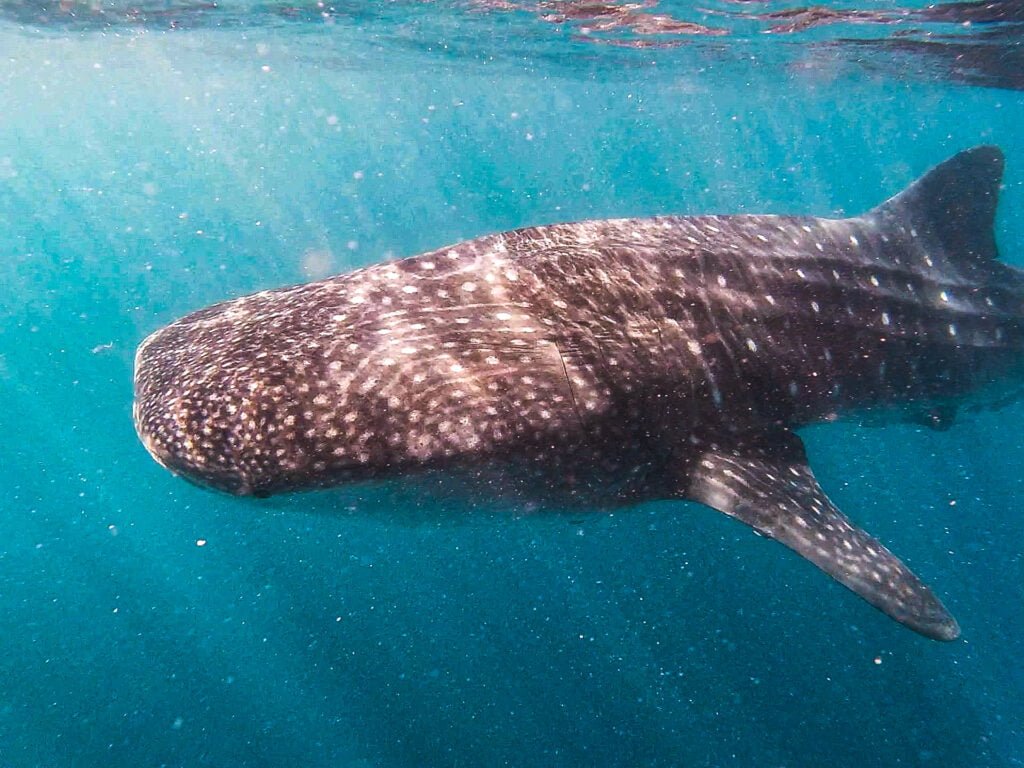
Another tour that we feel is a must-do is diving the Navy Pier. Thank to usually great visibility and the huge variety of marine life, this dive has been named one of the top ten shore-based dives in the world. Because the pier is on an active Australian Navy facility, the only way to access this dive is with Dive Ningaloo. We chose to do a night dive for a more unique experience, and although it ended up being more of a dusk/sunset dive, it worked out better because we still had a bit of daylight at the start of the dive to orient ourselves. And the amount of life under that pier is incredible! We saw countless fish, octopi, giant crays, crabs, a grey nurse shark, little colourful nudibranchs, and our favourite, the BFG or Big Friendly Grouper. This local Queensland grouper is about 300-400kg and possibly around 40 years old, and yes, he is very friendly! So many times during our dive we turned around just to come face to face with this gentle giant as he swam past; he even snuck up behind and startled one of our divers. Navy Pier was definitely one of our favourite and most memorable scuba dives to date.
NORTH POINT
The north point of the Cape is where you’ll find your surf beaches. Coming from Exmouth, Dunes is the first surf beach you’ll come across and most popular with the more advanced surfers. Close to Dunes, you’ll find the SS Mildura Wreck just offshore. Best seen at low tide, you can also snorkel/dive around the wreck (we didn’t) but be very cautious; dangerous currents are common in this area.
Continuing west along the Cape, you’ll reach Hunters Beach, probably the most popular surf beach of the area. Vlamingh Head Lighthouse is also well worth a look, particularly at sunset (especially with a full moon – the sun will set at the same time as the moon rises). It is also a great spot for humpback whale watching during whale season (approximately June to September).
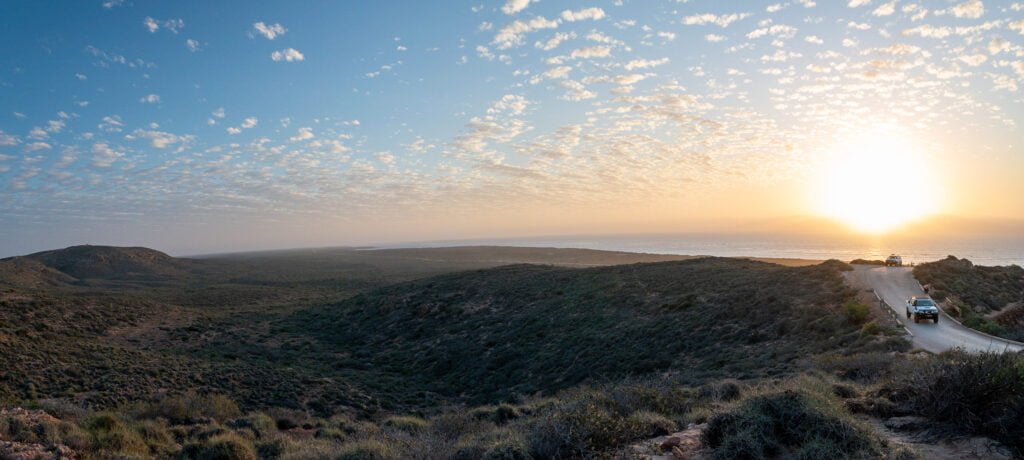
The last surf beach you’ll come to as you continue south to Cape Range is Wobiri, our favourite. It is the “beginner/kiddie” surf beach thanks to minimal rocks/reef to dodge and nice, friendly waves.
These beaches also tend to be great places to spot turtles as they are common nesting areas. Three species of turtle call Ningaloo home: the green turtle (most common), loggerhead turtle, and hawksbill turtle. September to December is mating season and October to March is nesting season, and about 60 days after nesting, the hatchlings emerge. It is not uncommon during mating and nesting season to see the waters around Exmouth teeming with turtles!
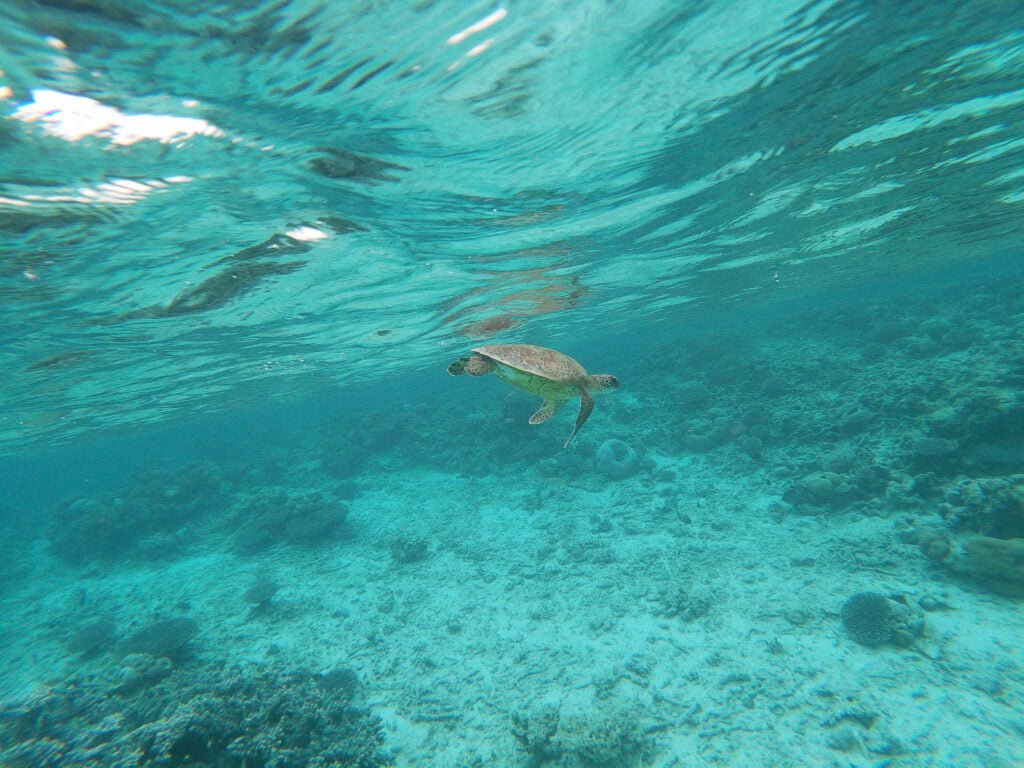
CAPE RANGE NATIONAL PARK
Cape Range National Park may be one of the smaller national parks in Australia but it is packed with natural beauty and opportunities to explore.
There are a multitude of snorkelling options along this short stretch of coastline, the three most well-known being, in order of north to south: Lakeside, Turquoise Bay, and Oyster Stacks. Lakeside was probably our favourite of the three, being one of the less visited spots and we thought the best sea life, such as large rays and groupers. To get to Lakeside, you must walk 500m along the beach from the car park until you get to the marine sanctuary zone. There is usually a small to medium current in the waters here so be aware of that.

Turquoise Bay is by far the most popular snorkel location, and with good reason; the beach here is absolutely stunning! During peak season it is highly advisable to arrive by mid-morning as the car park fills up quickly and it can be difficult, or even impossible, to find a spot after that. The drift snorkel area, off to the left or south, was where we spent most of our time. It’s best to walk south along the beach until you reach the edge of the reef, then jump in and simply let the current pull you along. However, you absolutely need to get out of the water before you reach the sandy point; otherwise, you risk being pulled out to sea by the strong outgoing currents. If that doesn’t sound like your cup of tea, the northern snorkel area known as the bay snorkel area has less side currents, but also less coral. Lastly, Oyster Stacks is at one of the narrowest points in the reef, with the outer reef being about 300 meters from shore, offering the opportunity to more easily reach the back reef for more variety in sea life. This spot in particular is tide dependent and should not be snorkelled if the tide is under 1.2m, so check tide times before heading out here (the visitors centre regularly posts suitable swim times).
If the conditions aren’t great for ocean activities, this can be a good opportunity to explore some of the range. The Mandu Mandu walk is a beautiful 3km walk through a dry creek bed through the gorge, with an optional tough, steep climb up to the top of the gorge which then circles back around to the start. It offers great views of both the reef and the range.
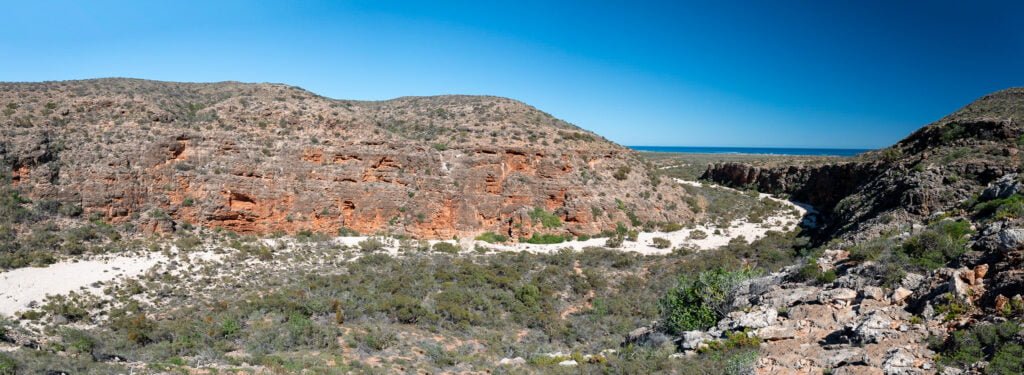
Yardie Creek at the southern end of the park is a magnificent and fairly easy walk along the creek and stunning red-walled gorge; it is best in early morning or late afternoon when the colours of the gorge really light up.
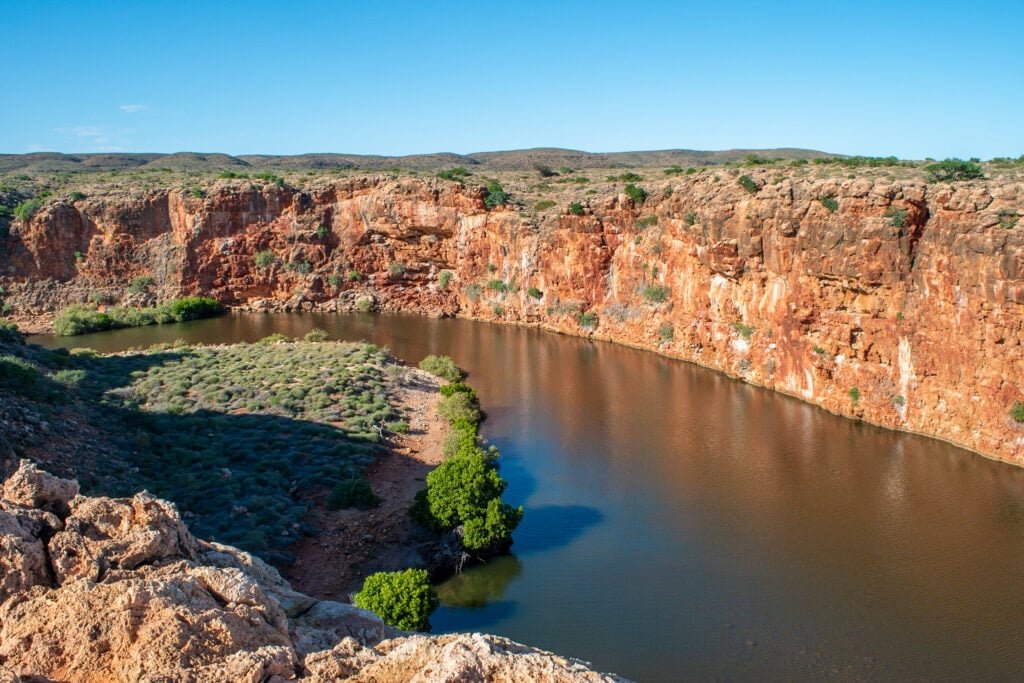
It’s one of the best places to see black-flanked rock wallabies and osprey. You also have the option to kayak, SUP, or take a guided boat ride down the creek for a different view.
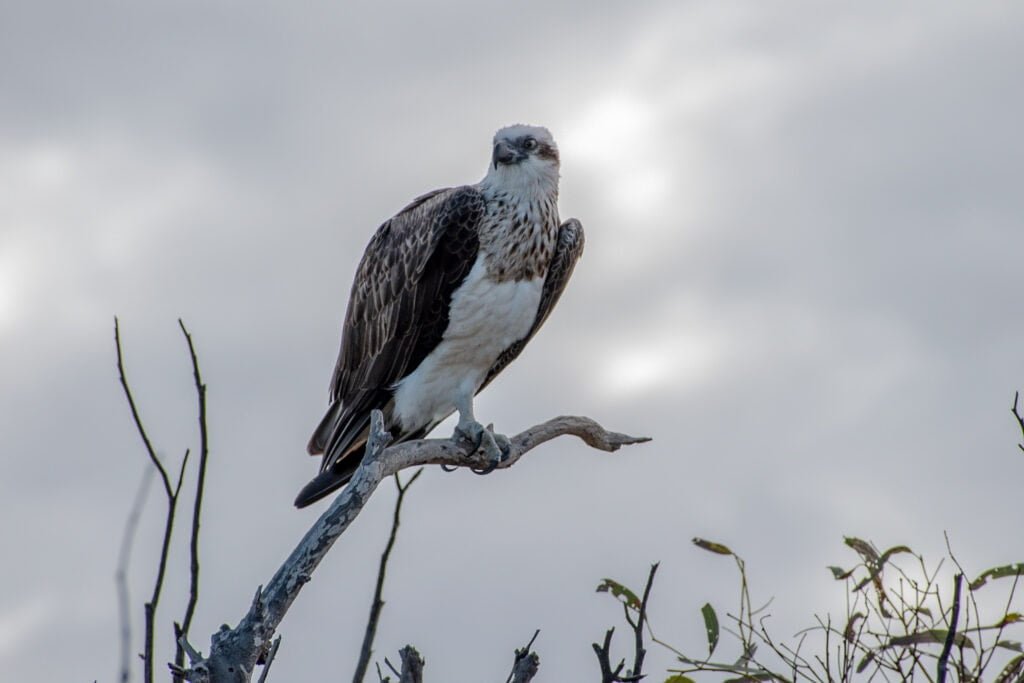
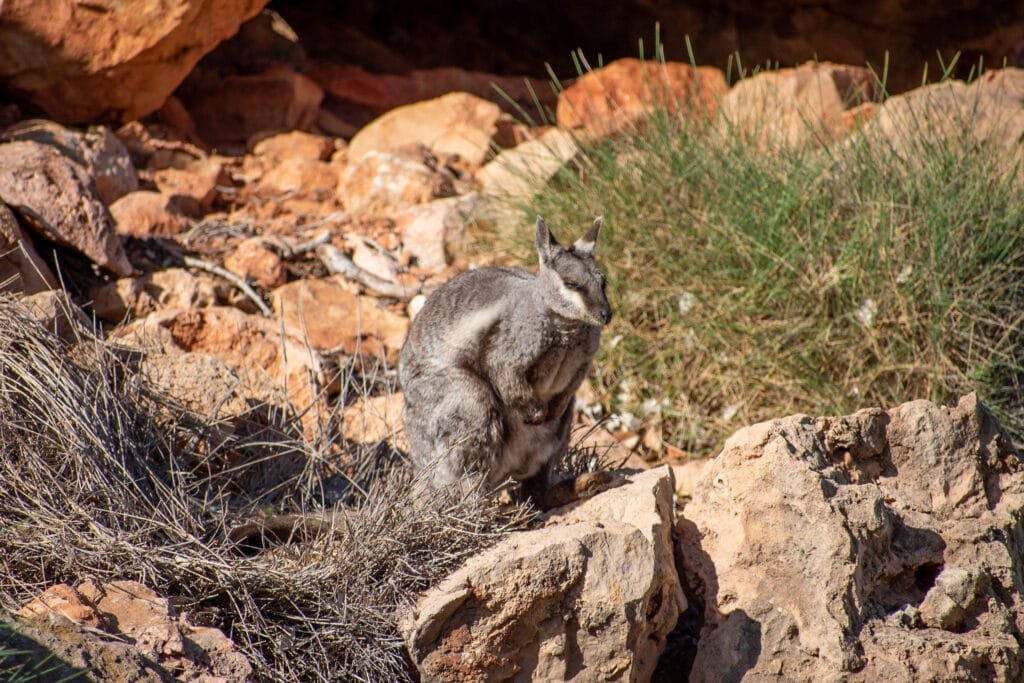
Driving through Cape Range, you’ll likely notice several unmarked tracks heading into the ranges. These tracks offer a mixed bag of adventures; you don’t know what you’re going to get until you get to the end of them. Some will take you up high for great views, while others take you to some pretty cool caves with Aboriginal art in them. Almost all of them are 4WD only as you need high clearance and the ability to get up and down some rocky steps, and make sure you stick to the available tracks that already exist.

If you plan on spending a lot of time in Cape Range, it is highly advisable to camp there. Most people don’t realise the northern end of Cape Range NP is about 50km from Exmouth town, which can mean a lot of driving back and forth! Cape Range is filled with beautiful campgrounds with great amenities and all close to the ocean. The more popular sites, such as Mesa and Osprey, fill up very quickly, especially during the dry season, sometimes on the day the campsites are released, which is 6 months ahead of time. Mesa has a beautiful little beach, with a bombie chock full of sea life towards the southern end, and a boat launching area. It is also one of the few – possibly the only – campsite in Cape Range where you’ll get a bit of Telstra reception. Kurrajong and North Kurrajong are the campsites we spent the most time camped at. Kurrajong in particular was probably our favourite of all the places we camped in Cape Range. The rocks along the beach are fantastic for squidding, the reef was really beautiful to snorkel, and we had regular sightings of dolphins, turtles, and whales. These two camps are also fairly central in the park, giving you ease of access to all the other attractions.

Yardie was one of the other campsite we stayed at. While it offers easy access to Yardie Creek, it’s not very well set up for larger vans, so it’s probably a more suitable campground for camper trailers and tents. While we didn’t camp at Osprey Bay because of a lack of availability, we did still spend a fair bit of time there, as it is one of the places you can moor kayaks and SUPs off shore for snorkelling. It was our favourite snorkel spot in Exmouth, thanks to great visibility and large amounts of coral and sea life, and rarely anyone else to share the waters with. Just make sure you’re fit enough to do the paddle out and back into shore; the moorings are a fair distance out (about 400m or so)!
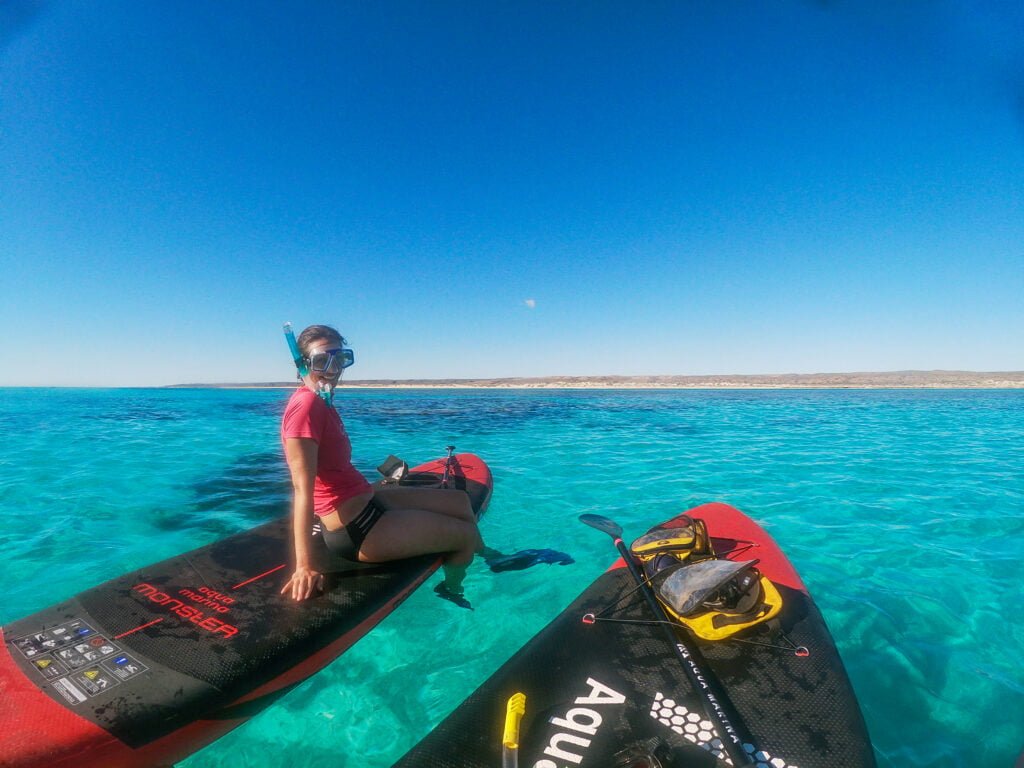
CHARLES KNIFE AND SHOTHOLE CANYON
Driving along the highway south of town, you’d have no idea that there are two particularly breathtaking canyons located deep in the range. Charles Knife is 2WD accessible and the drive itself makes it well worth a look as you follow the ridge up.

If you’re feeling more active, you can take the Badjirrajirra trail, a 6km, mostly flat walk that connects Charles Knife to Shothole Canyon. Shothole Canyon is named from actual holes in the canyon walls made by explosives back in the 50s for the purpose of creating a mini-earthquake for studies. This drive is 4WD only and can vary in quality; it was only mildly corrugated for us, but some people refer to it as Sh*thole Canyon due to the condition of the road. It’s worth the drive in to see up close all the colourful layers of rock that make up the canyon.

STATION STAYS IN THE EXMOUTH REGION
If you want to get a bit out of the busy-ness of Exmouth (which during the winter months and school holidays can get hectic!) there are some great camp options out of town. One is Yardie Creek, on the west side of the cape, which we heard a lot of good things about but never actually stayed at ourselves. About 90km south is the popular Bullara Station. Bullara is a working cattle station with a large, quirky campground and a lovely homestead where you can purchase some tasty treats (try their banana smoothie!) or even some fresh beef from Bullara’s own cattle. During the tourist season they have regular events on, including happy hour damper tasting around the communal campfire and dinner nights. There are some great little walks around the red sand dunes, perfect at sunset when the colours really light up.
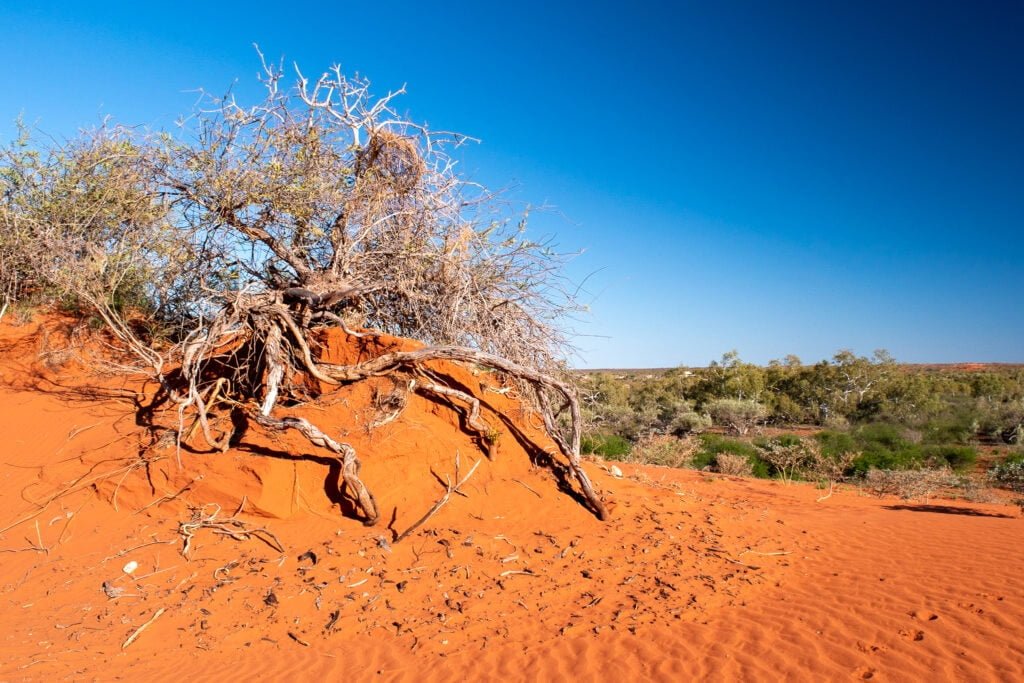
If you keep heading east from Bullara for about another 40km, you’ll reach Giralia Station. Being that bit further out of town, Giralia is perfect for really getting away and enjoying the serenity of the bush. For camping at Giralia you have two options: the campground at the Homestead, or remote camping along Giralia Bay. For the remote camping, you’ll need to be totally self-contained and self-sufficent as well as have a 4WD, and these sites are popular so you will need to book well in advance during peak times. Similar to Bullara, there are several bushwalks, including one that leads to a large dune perfect for sunsets. Giralia Bay is also a popular fishing spot, so it’s great if you have a boat (or a friend with a boat!)
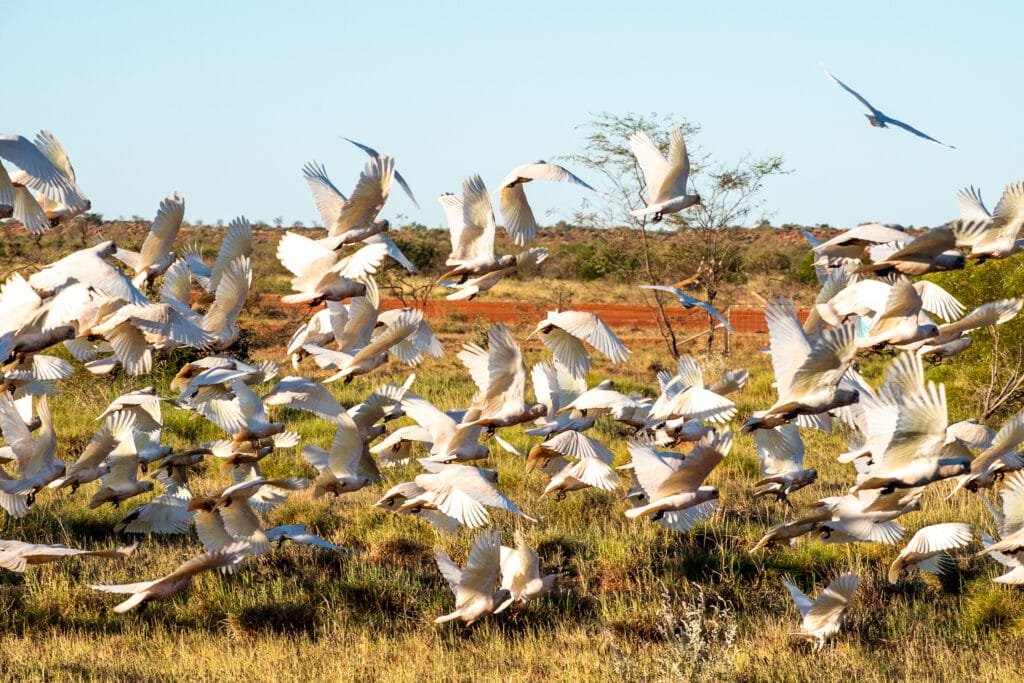
Our favourite station by far, and also one of our favourite camp spots overall, is Ningaloo Station. Although to be fair, as of 2020 it is no longer a station as ownership has changed to Parks WA; it now requires online booking and a parks pass to stay, as well as needing to be fully self-contained with your own toilet. There are several campgrounds available, each with their pros and cons; we stayed at South Lefroy, and we reckon it was the best campsite there. It is more protected from winds compared to others, has a reef right out in front of the camps, and the beachfront camping is second to none, so make sure you get a beachfront camp if you can!
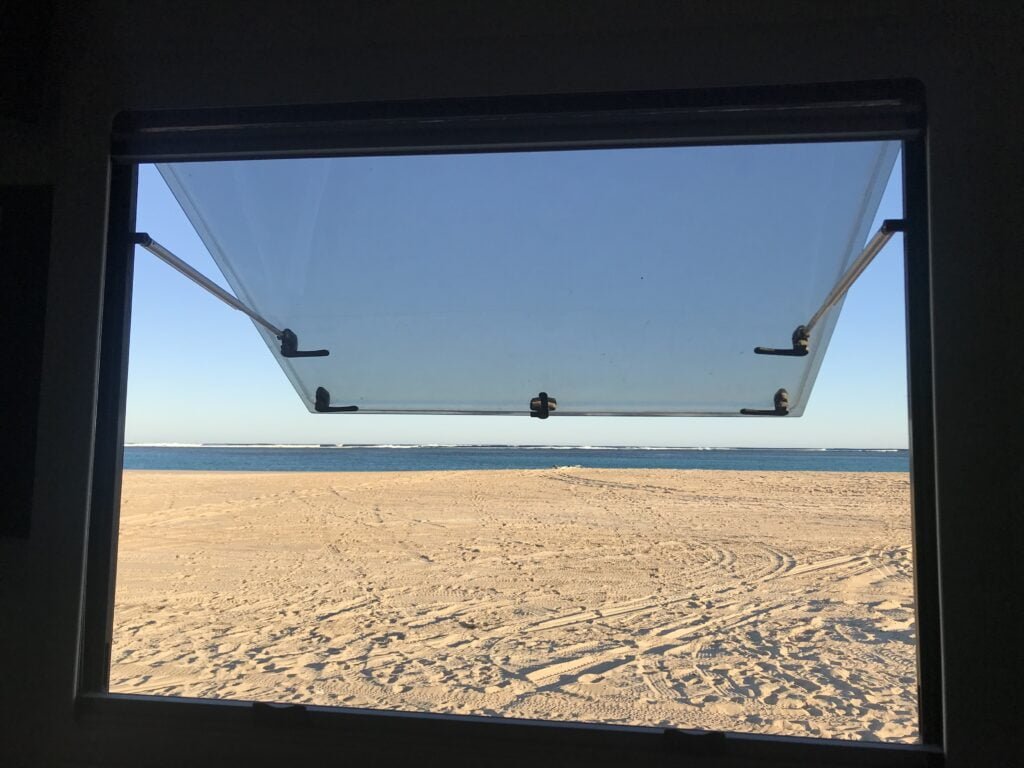
Getting to the campground is half (or probably more!) the battle; we’ve heard the road in from the highway frequently referred to as “The Worst Road in Australia”, and we would have to agree! Just to give you a bit of an indication, it took us 3 hours to get 30km when we left. If you have a smaller van or a camper trailer, you may find taking the northern track from Yardie Creek more preferable, but access across Yardie Creek can vary and after school holidays the track can get fairly chewed up as well, so check with the parks info centre before setting off. We also got the van bogged a devastating 50 meters from our campsite, so make sure you let your tyres down! But once you’ve arrived, all that’s left to do is relax. Snorkelling, paddling, fishing, spear fishing, and boating are the favourite activities of this area. It is a great place to see turtles; just south of South Lefroy campground is an area in the reef known as “Turtle Alley.” You can take a drive further south to see leftovers of the Norwegian Bay whaling station and even continue the drive all the way down to Coral Bay.

Well there you have it, our top experiences from our time in Exmouth. This extensive post, while a good start, no where near covers everything that you can do in this beautiful part of the world. It is something that needs to be seen and experienced for yourself to truly understand and appreciate.

